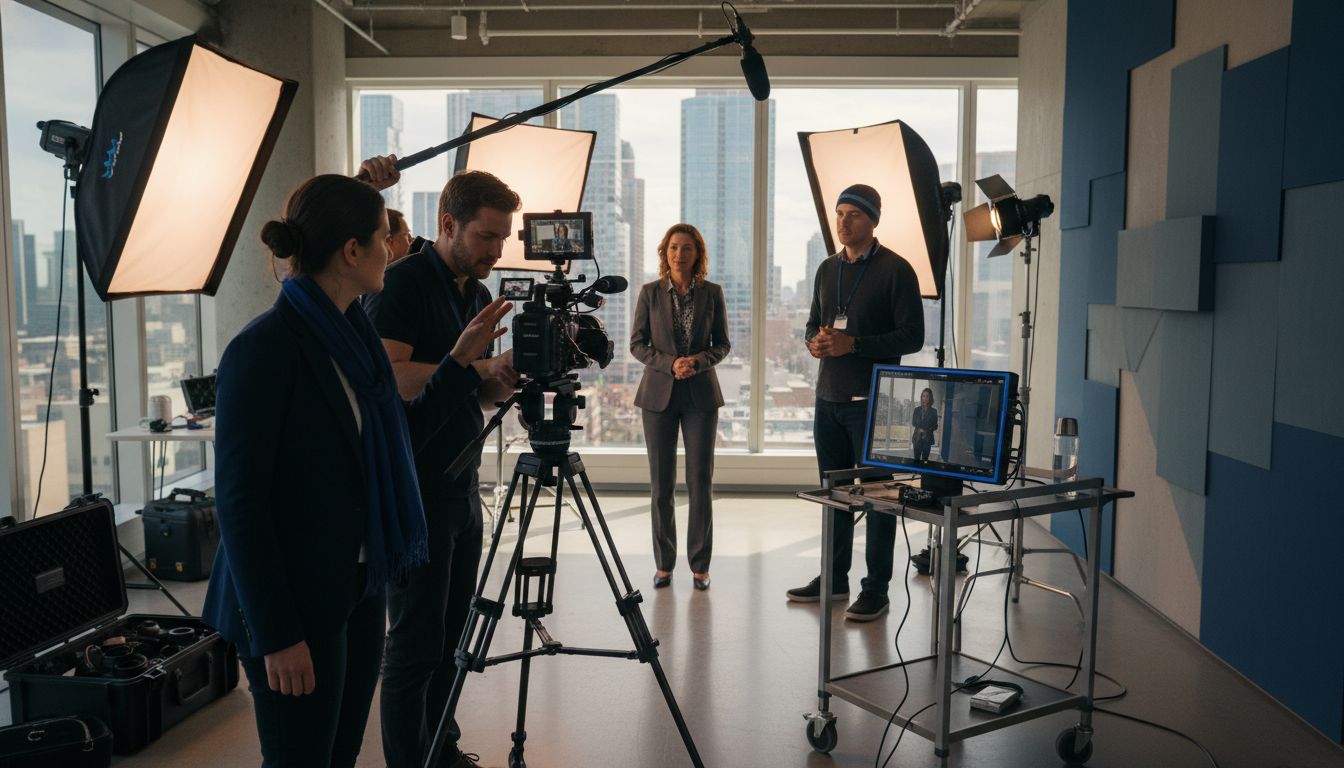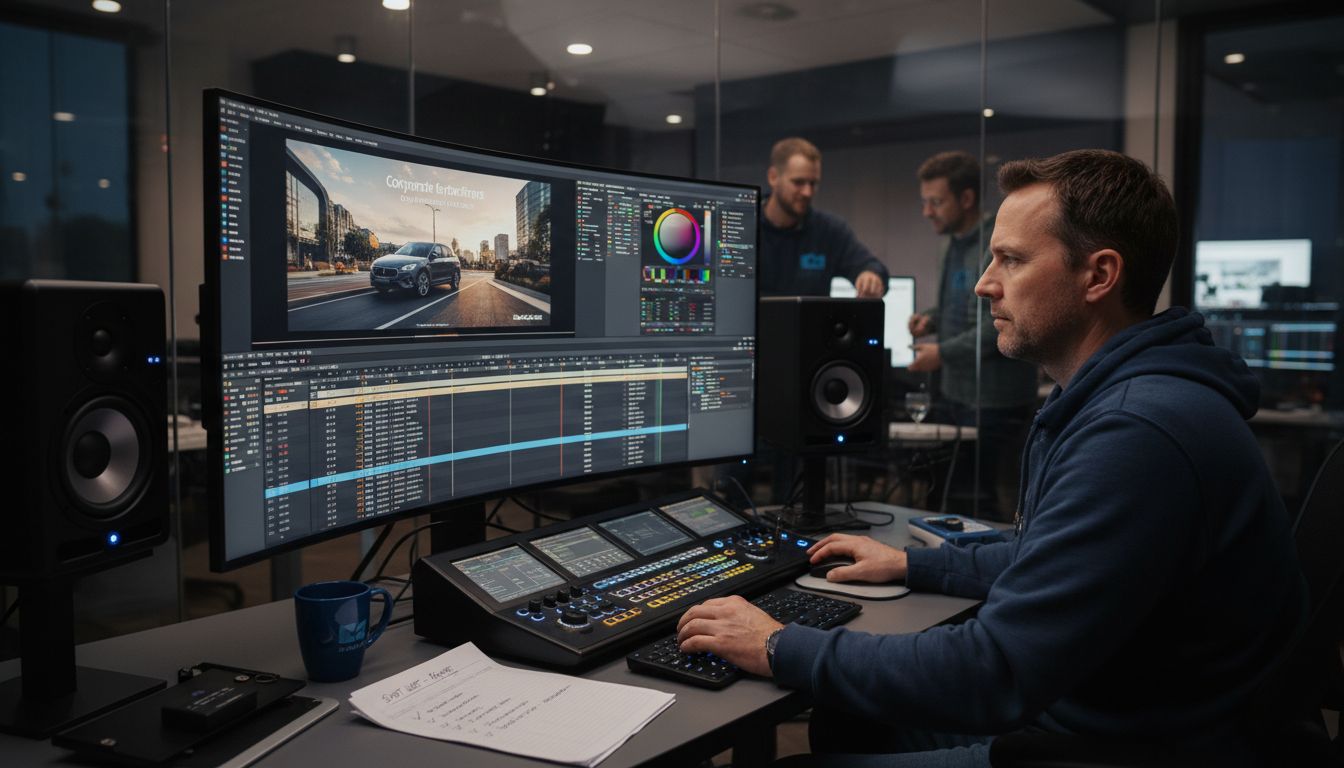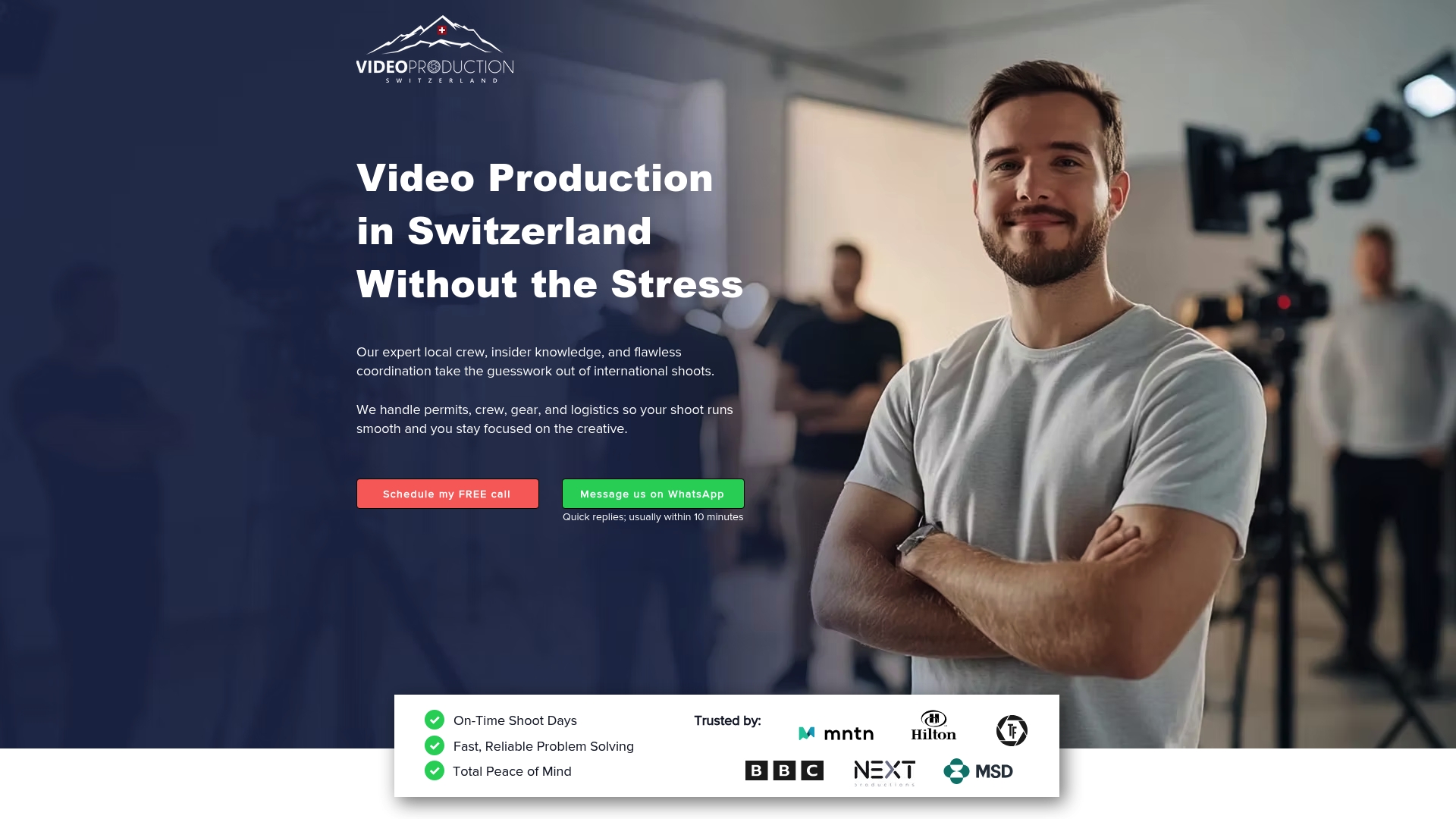Corporate Video Production Tips for Flawless Results
- info1419758
- 12 minutes ago
- 8 min read

Did you know that videos account for over 80 percent of all internet traffic worldwide? Crafting a polished corporate video can set your message apart in this crowded space. Clarity in your goals, the right team, and a thoughtful approach to storytelling make all the difference for brands aiming to connect with viewers and achieve lasting impact.
Table of Contents
Quick Summary
Key Point | Explanation |
1. Define clear video goals | Establish what you want to communicate and the purpose of your video. Understand the different types like training, social media, or storytelling. |
2. Create a detailed audience persona | Develop a specific understanding of who your viewers are, including their backgrounds, motivations, and prior knowledge. Tailor your message accordingly. |
3. Assemble a qualified production crew | Select team members based on their technical skills and collaborative nature. Ensure they have expertise in necessary roles like cinematography, sound, and editing. |
4. Scout locations thoughtfully | Evaluate potential locations based on how well they support your video’s narrative. Consider lighting, acoustics, and logistical needs for shooting. |
**5. Focus on effective post-production |
** | Organize and edit your footage with attention to narrative flow, color grading, and audio transitions. Select the best moments to create a compelling final product. |
Step 1: Define precise goals and target audience
Before you start shooting your corporate video, you need a crystal clear roadmap. This step is all about understanding exactly what you want to achieve and who you want to reach.
According to research from the University of Florida, identifying your goal and understanding your audience are the most critical considerations in video production. Your video’s success hinges on answering two fundamental questions: What do you want to communicate? Who needs to hear this message?
Start by determining your primary purpose. According to the Office for Victims of Crime guidelines, videos typically fall into four key categories:
Training videos
Public awareness content
Storytelling vignettes
Social media messaging
Once you select your purpose, dig deep into defining specific objectives. A goal is a broad vision your video aims to achieve. An objective is a precise, measurable outcome you want viewers to experience. For instance, a training video goal might be “improve team communication”, while an objective could be “increase interdepartmental collaboration by 25%”.
When defining your target audience, go beyond demographics. Research suggests understanding their ages, cultural backgrounds, interests, and educational levels. Ask yourself: Who will benefit most from this content? What prior knowledge do they have? What motivates them?
Here’s a summary of key considerations when defining your video’s goals and audience:
Consideration | Purpose Examples | Audience Insights |
Communication Goal | Training Public Awareness Storytelling Social Media | Who benefits What they know Motivations |
Objectives | Measurable outcomes Actionable targets | Interests Cultural background Education |
Audience Persona | Tailored messaging Focused narrative | Ages Prior knowledge Needs |
Pro Tip: Create a detailed audience persona. The more specifically you can describe your ideal viewer, the more precisely you can craft your message.
Your next step will be translating these goals into a comprehensive creative brief that will guide your entire production process.
Step 2: Assemble the optimal crew and resources
Now that you know your goals and target audience, it is time to build the dream team that will transform your vision into reality. Building the right crew is like casting a complex puzzle where every piece must fit perfectly.
According to the Bureau of Labor Statistics, most professional film and video editors need a bachelor’s degree in fields related to film or broadcasting. Modern video production requires deep understanding of digital cameras and editing software. Your crew members should be technically proficient and creatively skilled.
Start by identifying key roles your project needs:
Director of Photography
Camera Operators
Sound Engineers
Lighting Technicians
Production Assistants
Video Editors
When selecting crew members, prioritize technical competence and collaborative spirit. According to industry research, most professionals specialize in specific software and editing techniques. Look for team members who are versatile but have deep expertise in their specific domains.
Technical skills matter. Seek crew members familiar with multiple editing platforms and digital technologies. The Bureau of Labor Statistics recommends that beginners be familiar with various software types, even if they eventually specialize in one.
Pro Tip: Consider crew members who have professional certifications in their technical areas. These credentials demonstrate a commitment to professional development and mastery of their craft.
Your next step will involve creating a detailed production timeline and budget that aligns with your assembled team’s capabilities and expertise.
Step 3: Scout, secure, and prepare key locations
With your crew assembled, it is time to find the perfect backdrop for your corporate video. Location scouting is more than just finding a pretty space it is about discovering an environment that tells your story visually and practically.
According to a practical guide from ResourceUMC, location scouting requires thoughtful consideration before you start exploring. Begin by clearly defining the type of location you need. Ask yourself critical questions: Will your video be shot indoors or outdoors? What specific environment matches your narrative?
Think deeply about the tone and context of your location. A household kitchen communicates a completely different mood compared to a professional restaurant kitchen. Your location should not just look right it should feel right and support your video’s core message.
Consider these key factors when evaluating potential locations:
Spatial requirements for your crew and equipment
Natural and artificial lighting conditions
Acoustic quality for sound recording
Accessibility and logistical challenges
Aesthetic alignment with your brand story
Potential background distractions
Research suggests seeing locations ahead of time is crucial. Walk through the space. Visualize your shots. Take photographs. Consider how your crew will move and work within this environment. Test the lighting at different times of day if possible.
Pro Tip: Always have backup location options. Unexpected challenges like construction work, noise issues, or scheduling conflicts can derail your original plans.
Your next step involves securing necessary permits and formal permissions to guarantee a smooth shooting experience.
Step 4: Execute a smooth, coordinated shoot
Your pre-production groundwork has led to this moment. Now it is time to transform your carefully crafted plan into visual reality. A successful shoot requires precision teamwork and strategic execution.
According to Arizona State University’s brand guide, visual storytelling is about more than just capturing footage. Every frame should serve your narrative purpose with intentionality and clarity.
Start by establishing clear communication protocols. Assign specific roles and responsibilities to each team member. Your director should lead with a comprehensive shot list that details every required scene. Ensure everyone understands the day’s objectives and timeline.
Focus on creating compelling visual compositions. Position your subjects thoughtfully. Research indicates that background selection can dramatically impact storytelling. Avoid distracting elements that might pull viewer attention away from your primary message.
Key considerations during shooting include:
Maintaining consistent lighting
Capturing high quality audio
Monitoring technical equipment performance
Managing talent and crew energy levels
Staying true to your creative vision
The ASU brand guide recommends using B roll footage strategically. These supplementary shots will help enhance your narrative and provide visual depth to your corporate video.
Pro Tip: Use a shotgun microphone for precise audio capture, especially in unpredictable shooting environments. This allows you to direct sound recording and minimize background noise.
Your next step involves reviewing and selecting the most impactful footage for post production editing.
Step 5: Review, edit, and finalize the video
With raw footage captured, you are now entering the critical post production phase where your video truly comes to life. This is where technical skill meets creative storytelling.
According to the Bureau of Labor Statistics, professional video editing requires deep understanding of digital software and technical expertise. Most editors specialize in specific editing platforms, so choose your software wisely.
Begin by organizing all your raw footage systematically. Create folders for different shot types. Review each clip meticulously. Look for moments that perfectly capture your original creative vision. Pay attention to narrative flow, visual consistency, and emotional impact.
Focus on these key editing principles:
Maintain consistent color grading
Ensure smooth audio transitions
Remove unnecessary footage
Align visuals with your core message
Create a compelling narrative rhythm
When selecting your editing software, consider versatility. While most professionals eventually specialize in one platform, beginners should develop proficiency across multiple tools. Some editors even pursue professional certification to demonstrate their technical competence.
Learn the nuances of understanding the stages of video editing to refine your approach and elevate your final product.
Pro Tip: Take regular breaks during editing. Fresh eyes catch mistakes that fatigue might miss.
Your final step involves preparing your video for distribution across chosen platforms.

Simplify Your Corporate Video Production with Expert Local Support
Producing a flawless corporate video demands clear goals, the right crew, and seamless management of every detail from location scouting to post-production. The challenges of securing permits, coordinating skilled professionals, and managing logistics can easily overwhelm even experienced teams. If you want to focus on your creative vision while ensuring technical precision and smooth execution, professional local support makes all the difference.

Take the stress out of your next corporate shoot by partnering with Video Production Switzerland. With over 20 years of experience, their expert team offers trusted crew sourcing, permit handling, location scouting, and all logistical coordination that your project needs to stay on schedule and on budget. Don’t let challenges in assembling your crew or managing locations slow your progress. Visit their site now to schedule your free consultation and get tailored solutions built to meet your corporate video goals.
Frequently Asked Questions
What are the key steps for flawless corporate video production?
To achieve flawless results in corporate video production, start by defining your goals and target audience. Then, assemble the right crew, scout locations, execute a coordinated shoot, and finally, review and edit the footage.
How can I define clear objectives for my corporate video?
Define clear objectives by determining specific, measurable outcomes you want your viewers to achieve. For example, if your goal is to enhance team communication, aim for a measurable objective like improving collaboration by 25% within six months.
What should I consider when selecting locations for my corporate video?
When selecting locations, consider aspects such as spatial requirements, lighting conditions, and acoustic quality. Assess how each potential location aligns with your video’s narrative and brand message.
How can I ensure smooth coordination during the video shoot?
Ensure smooth coordination by clearly assigning roles and responsibilities to your team members. Create a comprehensive shot list that outlines each scene to keep the production on track.
What editing principles should I follow to enhance my corporate video?
Follow key editing principles like maintaining consistent color grading, ensuring smooth audio transitions, and crafting a compelling narrative rhythm. Focus on removing unnecessary footage to emphasize your core message clearly.
What actions can I take to prepare my video for distribution?
To prepare your video for distribution, finalize your edits and ensure all technical aspects are polished. Set a timeline for releasing the video across chosen platforms, targeting specific dates that align with your marketing goals.
Recommended

Comments